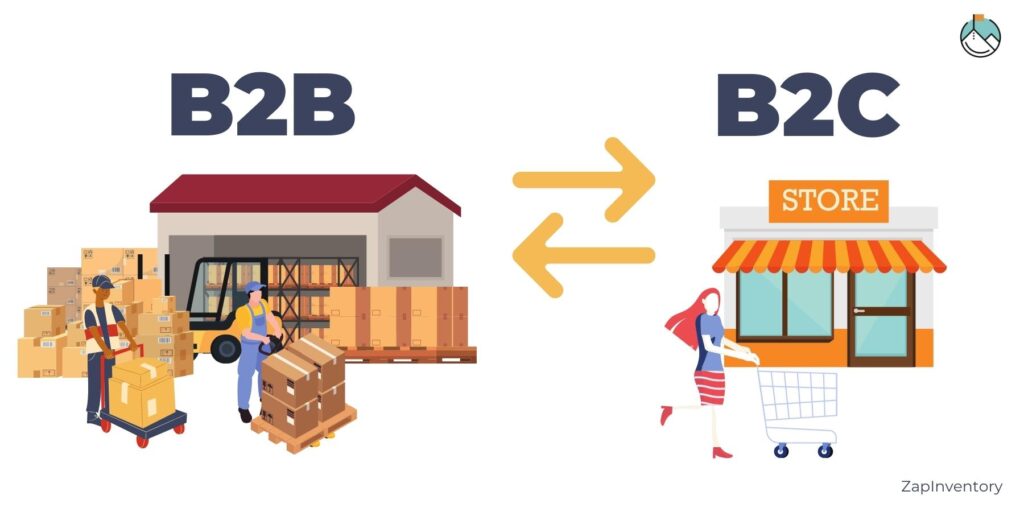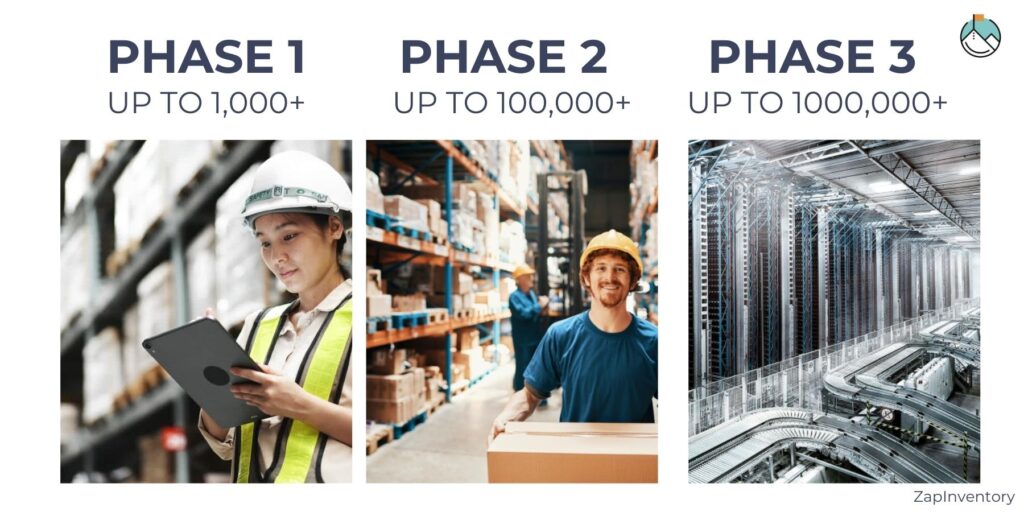If you are aware of the digital marketing spectrum, you must be aware of the terms B2B and B2C business types. But you might not be aware of the B2B and B2C marketing strategies. Most of the time, B2B also called business to business, marketing focuses on logical process driven purchasing decisions. On the other hand, B2C also called business to consumer marketing targets on emotion driven purchasing decisions.
As a B2B eCommerce business expands, many entrepreneurs consider spreading out operations to also serve B2C customers. Here the question arises, WHY?
When you own a B2C business, so having a customer database is beneficial for your business because it lets your brand make valuable direct to consumer relationships, gain customer insights, and higher the margins.
It also allows you to make the potential to sell your B2C customers adjacent products and services. We have a live example of this when Unilever acquired Dollar Shaving Club for $1 billion, they had the right idea to do so.
If you have a UX friendly eCommerce website and great online marketing tactics, what about logistics? Measuring eCommerce operations can be a challenging task, it doesn’t matter at what segment or stage your company is in. The technique is to be knowledgeable of the phase your business is at so that you can effectively deliver to your customers.
In order to escalate your business and optimize B2C eCommerce operations, read out these three phases to follow for your business:


Phase 1: Start Up
In phase one, a business usually has low sales volume rate and no indication about expansion. At this stage, the focus usually is on the marketing of the product and service. If suppose monthly orders remain at 1,000 or under, it is best to keep it simple and cost effective.
The benefit of having pre existing B2B operations is that you would only require ample space to set up a B2C incubator area. This model gonna save your company resources, as long as the B2C and B2B operations do not interfere with each other.
Phase 2: Smart Up
When your sales volume takes up and exceeds 1,000 orders per month, it is the right time to smarten up. With accelerating volumes, systems, people, and investments in space are essential for your B2C operations to run effortlessly.
- Choose the most applicable systems
To optimize operations procedures in your fulfillment center for B2C, it is necessary to make sure the order system and warehouse have the capacity to easily scale other volumes. Also, they must have the flexibility to support various value added services at the time of fulfillment. For instance, bunding of numerous products to sell collectively.
- Establish the required space
The problem may arise related to a space at the time you have higher order volumes. There should always be an extra space as there are recurring spikes in demand all thanks to marketing promotions and public holidays. Some of the leading eCommerce companies must have seen cases where these spikes can be as high as eight times the regular volume.
When you outsource to a service provider with fulfillment centers, it might provide you some support for short notice peaks in volume, But most certainly there are other things that you must look out for. For instance, it is imperative that there are alternatives available for future expansion. Every possible space in the warehouse should be racked up or if required, there should be a shot term storage space nearby.
But be very aware of the fact that, if you are utilizing an additional warehouse, the pick and processes will be much more meticulous and time consuming. So, you must use it as an interim solution.
- Hire the right staff members
When you run efficient and scalable operations, it requires powerful leadership with experienced logistics managers. Just do not hire some blue collar workers and someone to look out for the warehouse and distribution operations on the side. They must be able to drive down the cost per order and handle a quality customer experience.
As per se, logistic costs can add around 15% to 25% of total product costs, that is why it is relevant to invest in the right people.
To modify spikes, you must consider hiring contract workers but for this, the rates can be 60% higher per month as compared to permanent warehouse staff.
Phase Three: Scale Up
Only a few leading industries actually scale as high as 100,000 orders per month. This means almost 5,000 orders per day for a five day work operation. If an order fulfillment process is taking 12 minutes, this would require a workforce of 140!
This does not even comprise any overhead charges such as team leads, supervisor, quality control staff, returns workers, or managers.
It also gets intriguing from a space perspective. Here, let’s assume that there are 2.5 million units for storage and presume each SKU has similar measurements. This allows the same amount of SKUs to fit into one storage box.
Around 2.5 million units lead to a 9,000 sqm warehouse without computing for canteen, office space, packaging storage, returns, shipping, and other operations. The third phase requires a viable warehousing and distribution model to integrate an absolute size of manpower and space involved.
At such a scale, even the petite details can add up to impact productivity and costs substantially. Under are the points that you should watch out for:
- Plan the procedure with the smallest of details
It is utterly essential to comprehend all processes in the warehouse to anticipate possible bottlenecks for future set ups. Imagine the number of operators required if a superfluous step is repeated 4,763 times daily during processing.
Robots and other forms of expensive automation can be evaluated but it requires justification in terms of efficiency and return on investment.
- Customize to augment efficiency
Sometimes you might be overlooked, but the layout of the warehouse can add extra time, steps, and costs to order processing. For instance, if the warehouse layout has mezzanine floors, it will eventually double the order processing time due to long walk ways.
In a quintessential world, each country is full of 10,000 sqm warehouses ready for move in. But unfortunately, warehouses are rarely appropriate, moreover planning of the space has to be done from scratch.
There is an aCommerce brand that has transformed an old carpet manufacturing factory into a 7,000 sqm exclusive warehouse fitted with four levels of mezzanine and semi automation for its clients. It is also completed with the warehouse processes as well as running the operations were organized for the client in less than three months. Before going on any decision, you might want to consult some experts or outsource warehouse operations to make sure of effortless scaling.
- Choose appropriate last mile transportation
Establish strategic partnerships with third party logistics (3PL) who provide guaranteed volumes or have an extensive network in the country. It should include quick delivery and support for local preference payment options such as Cash On Delivery (COD). The last mile delivery from the warehouse to the customer end should not be neglected.
No matter in what phase you are in, be it start up, smart up, or scale up phase, your logistics staff should always maintain the big picture in mind. And after that, must decide what fits your objective in each phase. If you are trying to start up or smart up, it is best to seek a professional opinion before making a big decision. It is necessary because the operations process either can make your business or break your business.
Summing Up
Thank you for reading out this article! We hope that through this article you have had a proper understanding of B2B and B2C business types.
ZapInventory provides incredible and engaging services to its clients. We believe in making acquaintances with our clients by delivering the project on time. We always believe in expanding your business to stand out among the competition. Our offering includes the best solutions at an affordable cost. You can connect with us for more details and also visit our website.
 Start using ZapInventory today
Start using ZapInventory today
